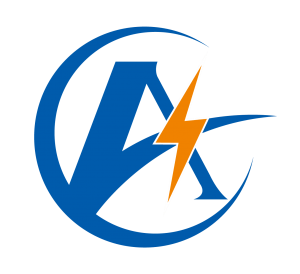Choosing the right EV charger is crucial. Understanding EV Charger Level 1, 2, 3 differences matters. Each level offers distinct advantages and limitations. This guide explores their costs, speeds, and applications. Consequently, you can make an informed decision.
What is EV Charger Level 1, 2, 3?
These levels classify charging power and speed. Essentially, EV Charger Level 1, 2, 3 vary significantly. Level 1 uses standard household outlets. Level 2 EV charger requires dedicated 240V circuits. EV Level 3 charging station provides rapid DC fast charging.
Level 1 Charging: Basics and Use Cases
Level 1 charging is the simplest method. It uses a standard 120V AC outlet. Therefore, installation costs are minimal. However, charging speed is very slow. It adds about 3-5 miles of range hourly.
This method suits occasional drivers best. It is ideal for overnight home charging. Also, it works as an emergency backup. But it is impractical for daily heavy use.
Level 2 Charging: The Ideal Solution
Level 2 charging operates at 240V. It significantly reduces charging time. Typically, it delivers 10-60 miles per hour. Installation requires a dedicated circuit. Professional setup is essential for safety.
It is perfect for residential garages. Additionally, workplaces and hotels use it. Public parking lots often install it. It balances speed and cost effectively.
Level 3 Charging: Maximum Speed
Level 3 charging uses direct current (DC). It is also called DC fast charging. It can charge most EVs to 80% quickly. Often, this takes only 20-30 minutes. However, costs are substantially higher.
It is essential for commercial locations. For instance, highway rest stops need it. Shopping malls and fleets use it extensively. But it is unsuitable for home use.
Comparing Costs and Speeds
Costs vary widely across EV Charger Level 1, 2, 3. Level 1 EV charger equipment costs are lowest. EV Level 2 charger requires moderate investment. Level 3 EV charging station involves significant expenses. Installation complexity also increases accordingly.
Speeds differ dramatically too. Level 1 is slow but convenient. EV Level 2 charger offers a practical balance. Level 3 EV charging station provides unparalleled rapid charging.
Ideal Application Scenarios
Different settings demand different solutions.
DC Fast Charging (Level 3) Stations:
-
Shopping Malls: Attract customers with quick charging.
-
Office Premises: Support employees and visitors efficiently.
-
Expressway Rest Areas: Enable long-distance travel.
-
Public Spaces: Enhance urban mobility infrastructure.
-
Residential Complexes: Supplement slower charging options.
-
Hospitals: Ensure reliable transport for critical services.
-
Car Parks: Generate additional revenue streams.
AC Charging (Level 2) Stations:
-
Private Garages: Perfect for overnight home charging.
-
Residential Community Parking: Serve multiple residents conveniently.
-
Corporate Campuses: Charge fleet and employee vehicles daily.
-
Locations allowing extended parking durations.
Aegen: Supporting All Charging Levels
Implementing any EV Charger Level 1, 2, 3 requires expertise. Aegen is a leading Chinese manufacturer. They provide components for all charging levels. Specifically, they offer technical support for production.
Moreover, Aegen customizes solutions for distributors. They adapt products to specific market needs. This ensures optimal performance and reliability. Their expertise covers entire infrastructure projects.
Making the Right Choice
Consider your specific needs carefully. Evaluate driving patterns and available time. Assess electrical capacity and budget constraints. EV Level 1 charger works for low-demand situations. Level 2 EV charger satisfies most daily requirements. Level 3 EV charging station serves commercial and urgent needs. CCS EV Charger Explained: How It Works & Benefits.
Consult with professionals before deciding. Plan for future expansion possibilities. Choose reliable partners like Aegen for support.
Conclusion: Powering Your EV Journey
Understanding EV Charger Level 1, 2, 3 is essential. Each level serves different purposes effectively. The right choice depends on individual circumstances. With technological advancements, options keep improving.
Partners like Aegen provide crucial manufacturing support. They enable successful charging infrastructure deployment. Embrace the appropriate charging solution today. Enjoy convenient and efficient electric vehicle ownership.

